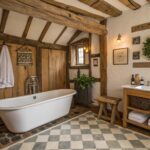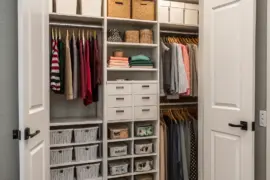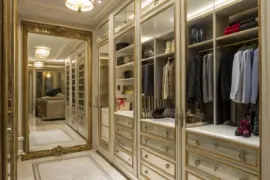There’s something captivating about the possibilities that come with mobile home skirting. Whether you’re aiming for pure practicality or bold curb appeal, the right skirting can truly change the way your home feels.
Ready for a creative journey? Let’s get inspired!
1. Plywood Play: DIY Skirting That Wows
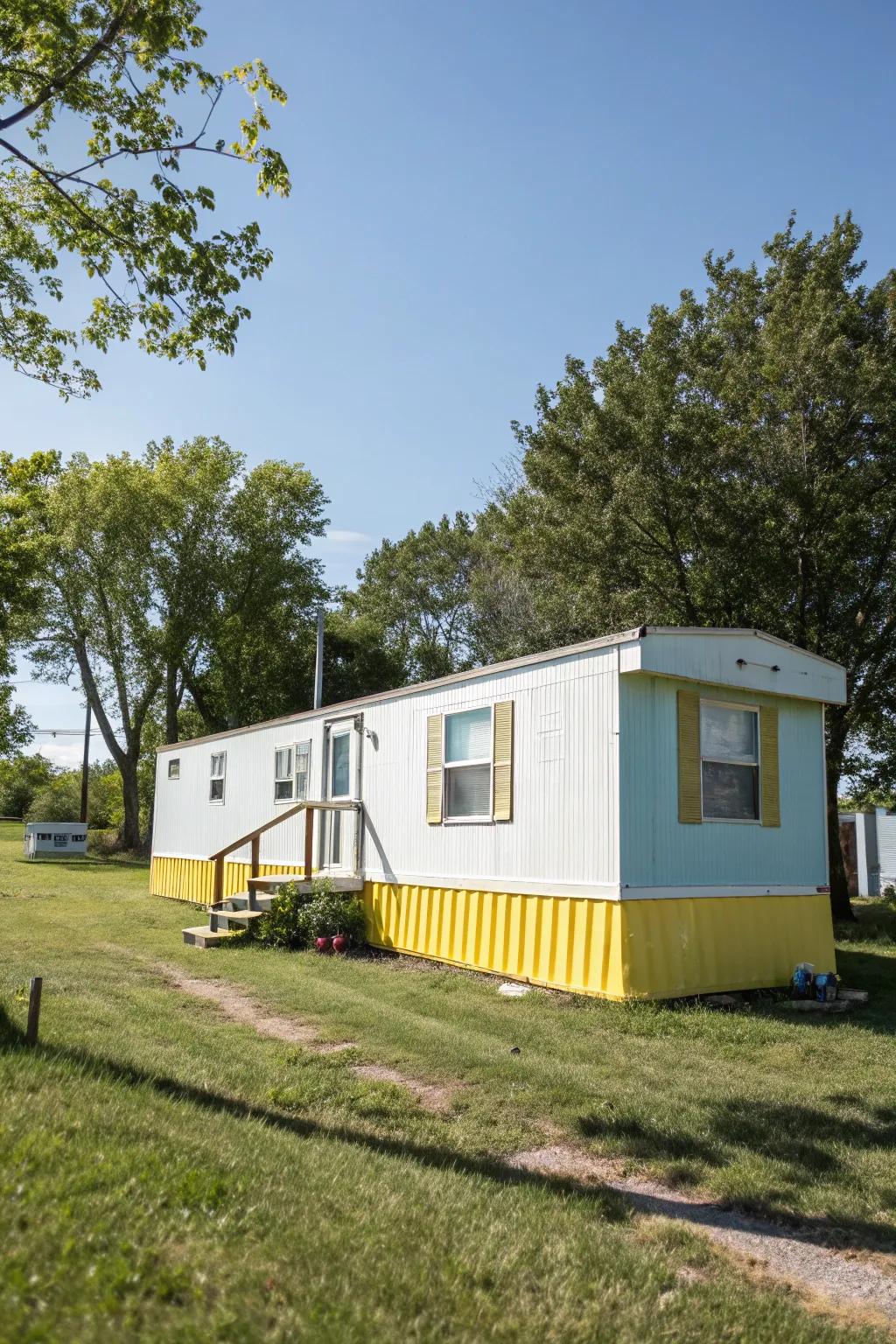
Let’s talk plywood—truly the unsung hero for DIY mobile home skirting. Versatile, affordable, and begging for a personal touch, plywood gives you a blank canvas to express your creativity right at the base of your home.
I once teamed up with Maya and Luis, a young couple eager to give their mobile home some curb appeal without breaking the bank. We mapped out a plan using exterior-grade plywood, and then the fun began: bold colors, geometric stencils, and a weatherproof sealant brought the whole project to life. Their neighbors stopped by, asking if they’d installed custom panels!
It’s amazing what a weekend, some paint, and a little imagination can do.
If you’re hungry for inspiration, here are a few plywood skirting ideas to ignite your creativity:
- Paint a mural or whimsical pattern for a one-of-a-kind look.
- Use wood stain for a rustic barn-board effect.
- Add trim along the top and bottom for a clean, modern edge.
- Try a stencil motif to mimic lattice or stone for less.
Personalized plywood skirting isn’t just budget-friendly—it tells your story.
A few relevant products:
2. Smooth Stucco, Lasting Luxury: The Seamless Skirting Solution
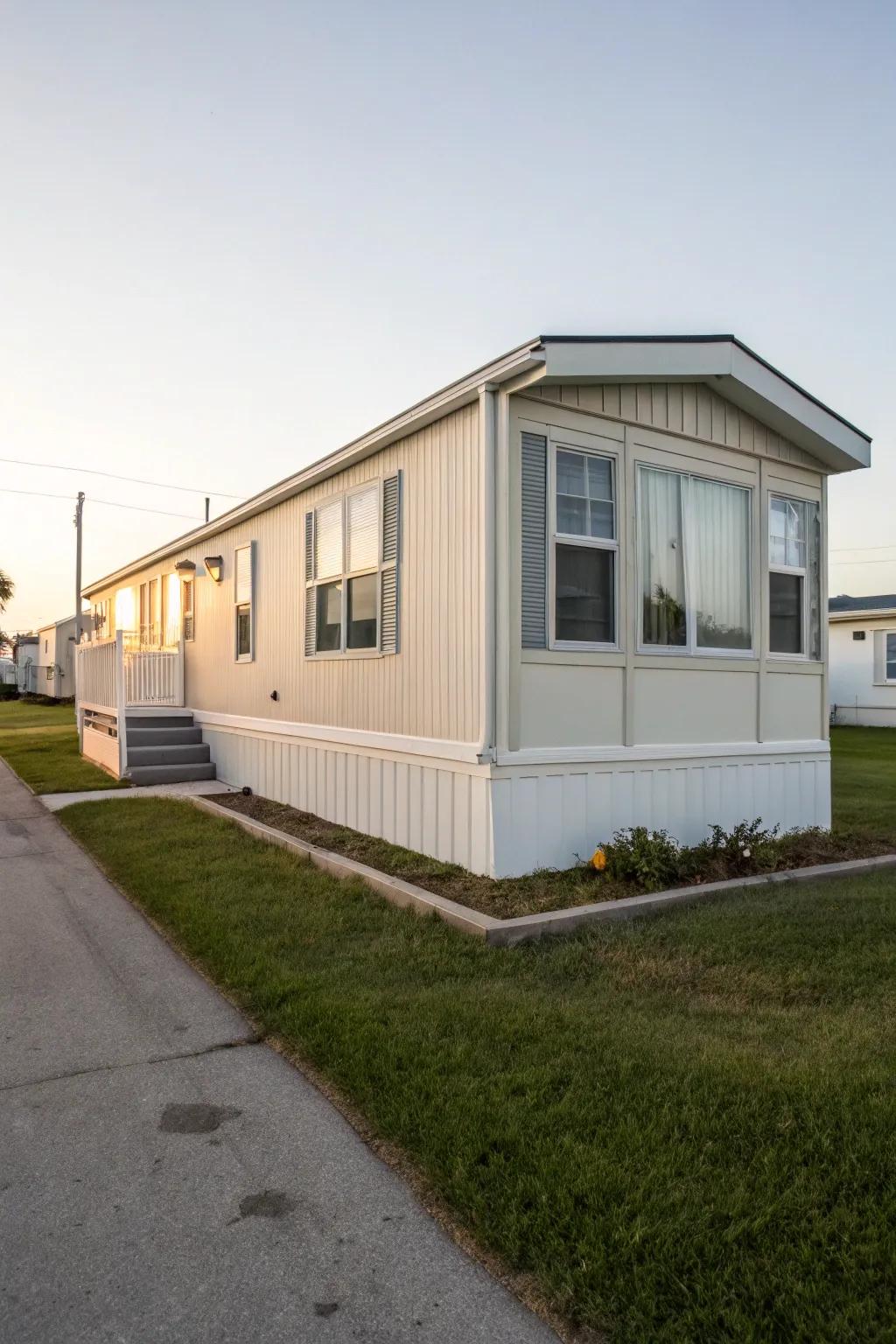
If you dream of creating a flawless, magazine-worthy exterior for your mobile home, let me introduce you to the magic of stucco skirting. There’s a certain grace to its silky, uninterrupted surface—I’ve always admired how it brings everything together, much like a crisp tablecloth sets the mood for a memorable meal.
Stucco isn’t just pretty on the surface. It delivers more than curb appeal—it acts as a steadfast barrier, helping your home weather storms, sun, and everyday wear and tear. Unlike vinyl or lattice, stucco truly wraps your home with a coat of armor, resisting moisture and pests in ways that feel effortless. I’ve worked with clients who wanted to tame their wild garden edges, and stucco was the answer that transformed their scattered spaces into a serene retreat.
Here’s why homeowners return to stucco, time after time:
- Low maintenance: Once applied, stucco needs just the occasional rinse—no regular painting or staining.
- Timeless appearance: With options to tint or texture, your skirting can be as soft or dramatic as your style demands.
- Excellent insulation: Stucco adds a dependable thermal barrier, keeping interiors more comfortable year-round.
Maintenance is refreshingly simple. Every so often, check for cracks or chips—usually, a quick patch does the trick. It’s also smart to start with a good primer and sealer for that locked-in protection. I once partnered with the Harris family, who wanted a refined finish that still stood up to their energetic children (and two large dogs). Stucco changed everything: their home now looks sharper, and the skirting has stood strong through plenty of backyard chaos.
Ready for a smoother, more elegant look? With a bit of planning, stucco skirting can give your home a feel that’s both inviting and enduring.
Possibly helpful picks:
3. Material Mixology: Crafting Character Through Contrast
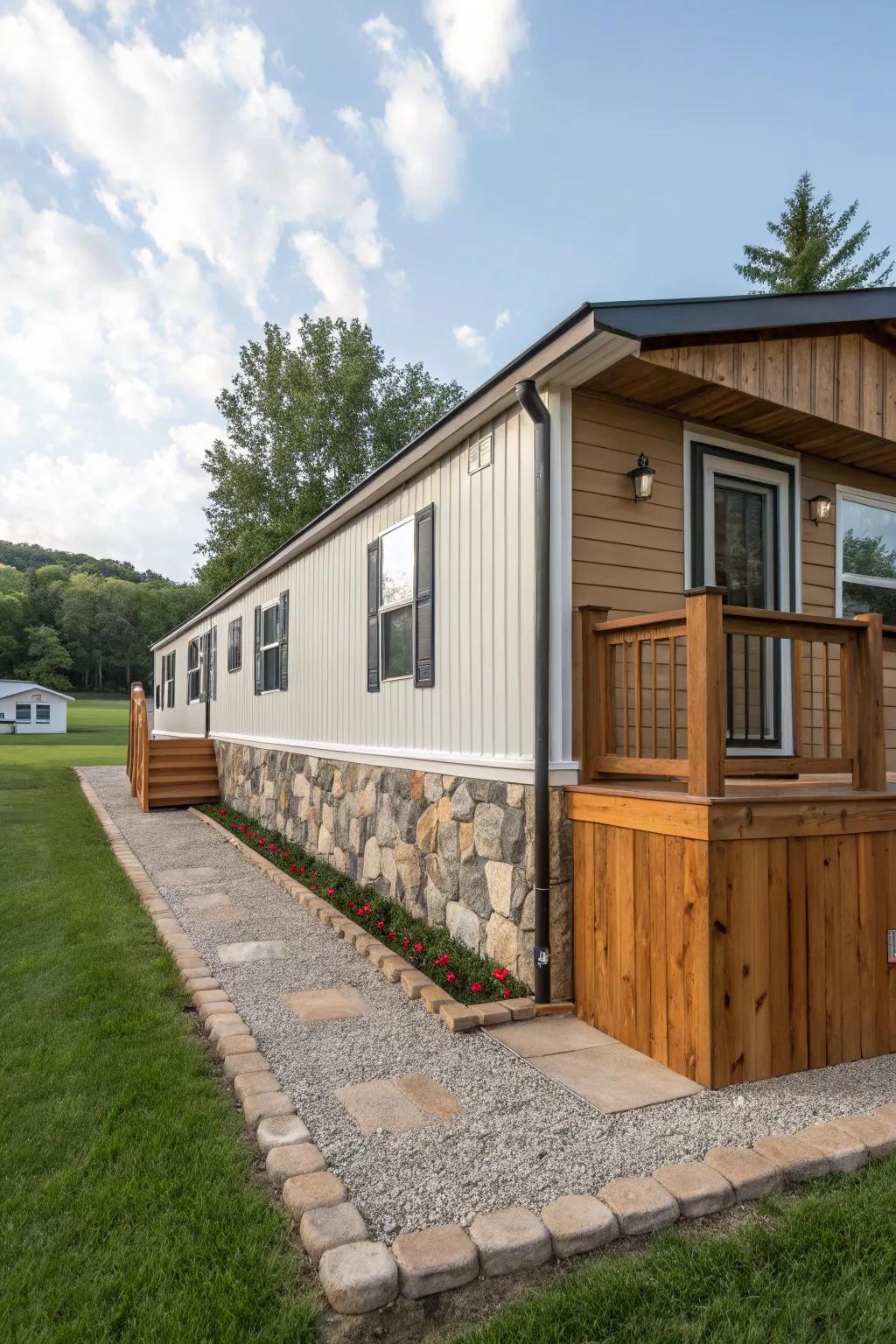
Mixing materials like wood and stone for skirting lets you truly express your creative side—and it’s almost always a conversation starter! Pair warm wood with cool stone for contrast, or mix textures for added depth. If you love a home that feels handcrafted just for you, don’t be shy: try different combinations until you find what feels right.
Might be a good match:
4. Stone Alone—Texture Makes It Your Own
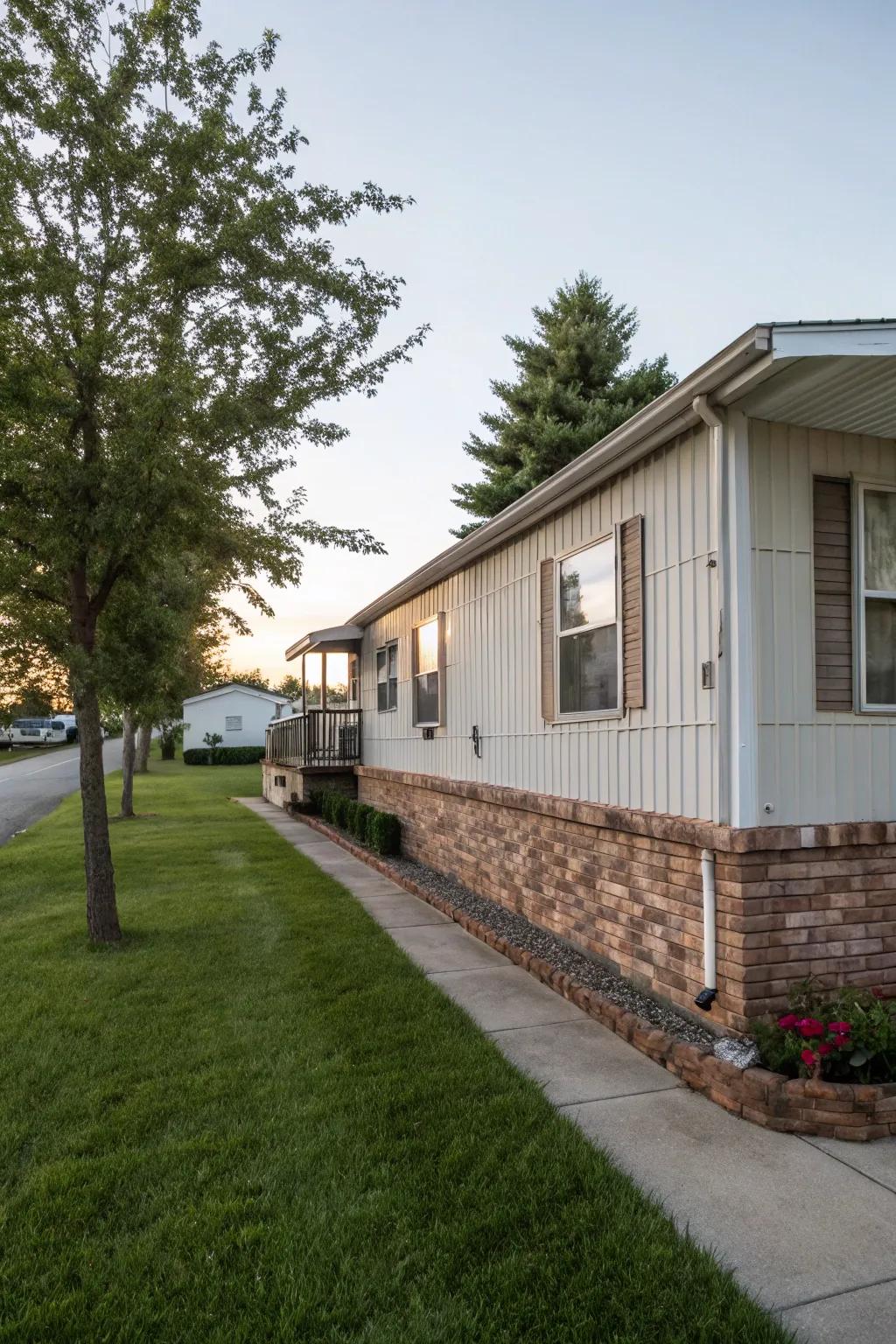
Brick or stone veneer skirting isn’t just a visual treat. It adds a substantial air—a sense of heritage and craftsmanship—to even the most modern mobile homes.
Sometimes, a little texture is all you need to make your home unforgettable.
Some handy options:
5. Fiber Cement Power
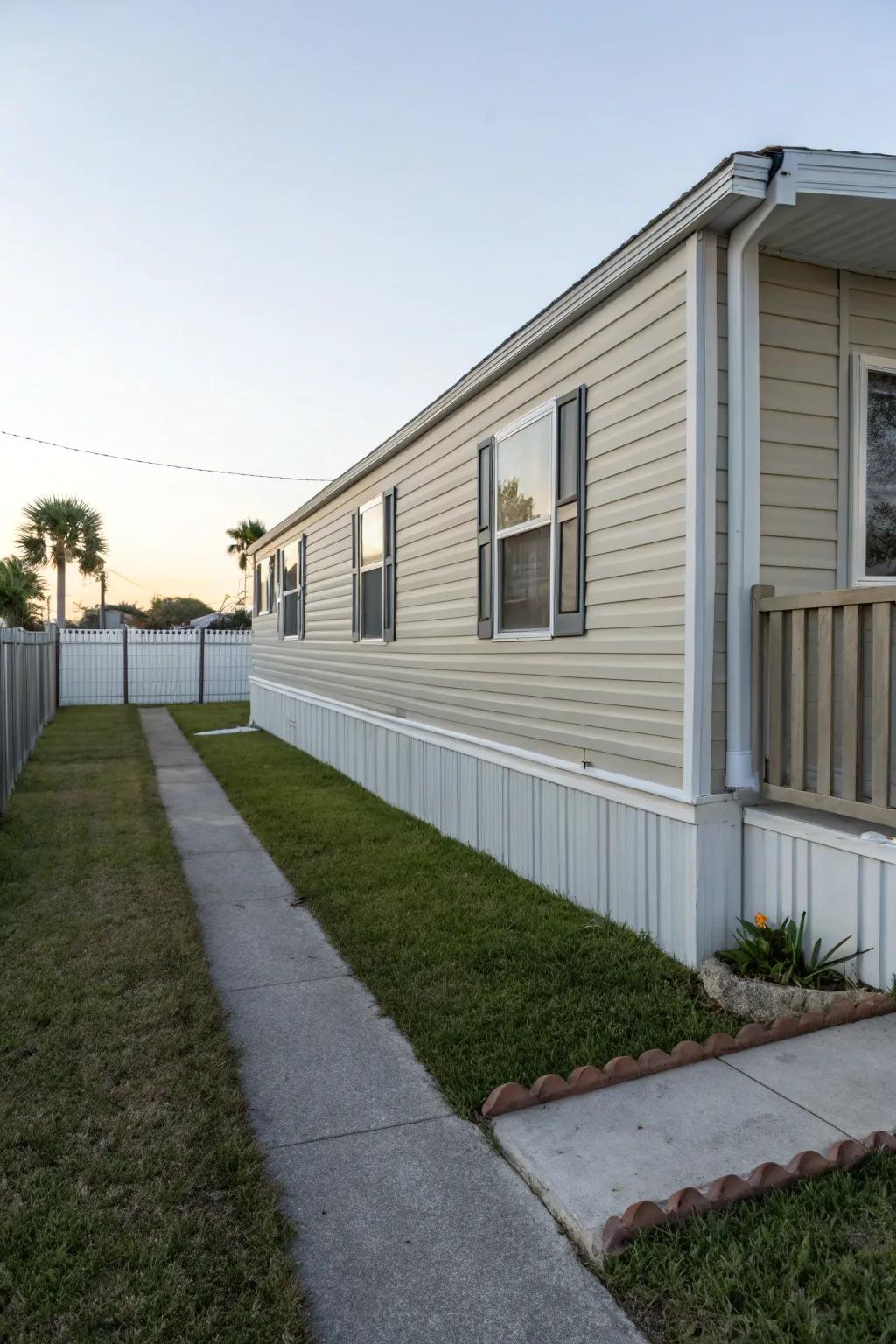
Looking for something sturdy, sustainable, and smart? Fiber cement skirting checks all the boxes. It’s pest-resistant, stands strong against the weather, and has a modern look that adapts to any home style.
A quick tip: After installation, I always recommend sealing the edges for extra protection and cleaning gently once a season.
Durable, eco-friendly, and low-maintenance—what’s not to love?
A few helpful options:
6. Simply Sleek: Modern Panels
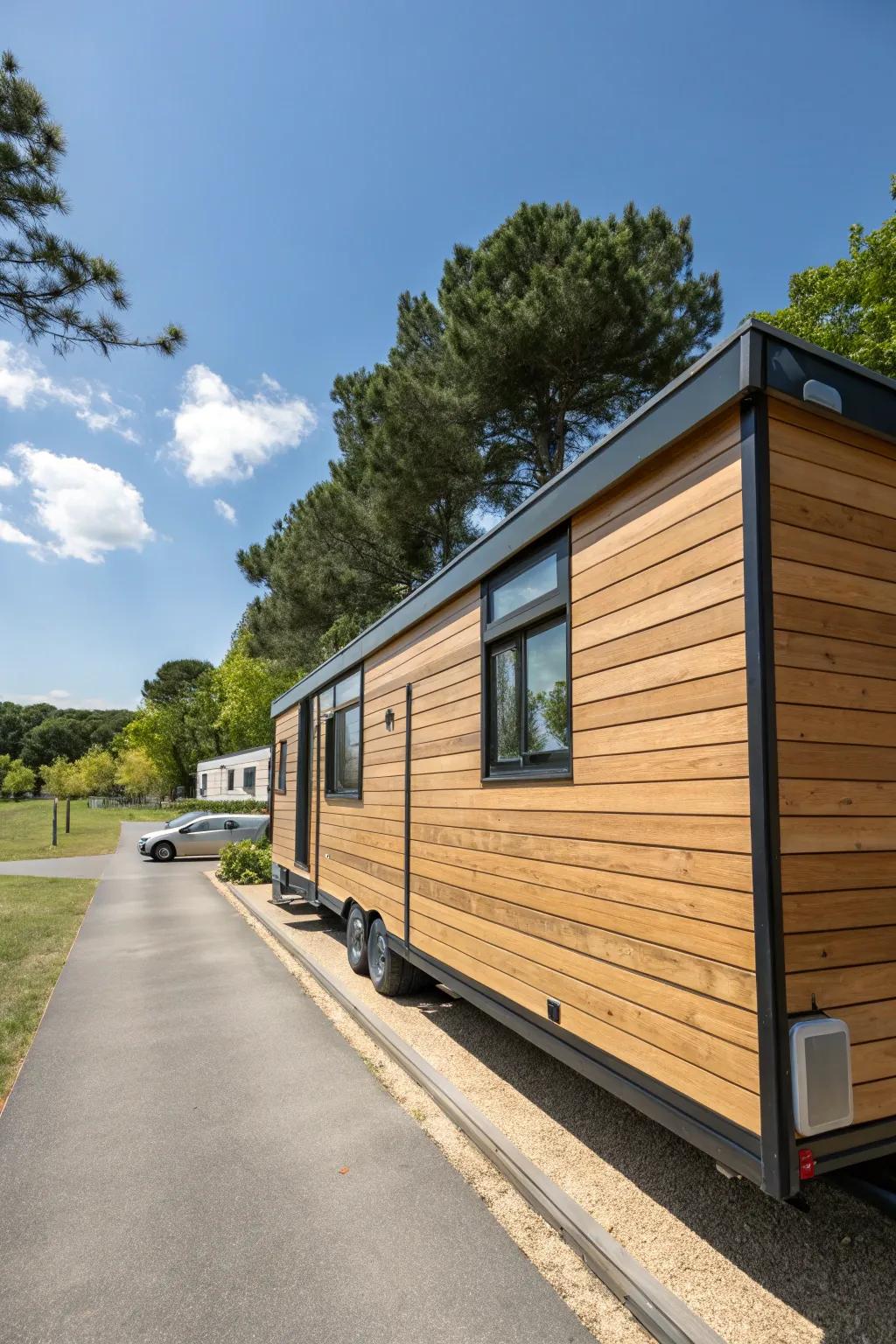
Horizontal wood panels create a look that’s both streamlined and sophisticated. If you’re drawn to clean lines and crisp profiles, this style might be your calling card.
It always amazes me how a simple orientation shift can bring a totally new energy to a home—sometimes, modern is just a matter of perspective.
These products might help:

Why settle for a separation between your home and your garden when you can blend them beautifully? Mixing landscaping with skirting is one of my favorite ways to create continuity—almost like your home grew right out of the earth.
Looking to start? Here’s how you can bring harmony to your horizons:
- Frame your skirting with low-maintenance shrubs for soft, year-round greenery.
- Layer river stones or pebbles at the base for easy water drainage and a polished look.
- Integrate planter boxes brimming with seasonal blooms to add vibrant color and fragrance.
- Tuck in solar lights for an enchanting glow when dusk falls.
Last summer, I helped the lovely Garcia family bring their vision to life. They wanted their mobile home to feel surrounded by nature, not sitting on top of it. We mapped out curves of ornamental grasses and accented the new stone skirting with clusters of wildflowers and hidden solar lights. Stepping back at sunset, it felt like a storybook scene.
Landscaped skirting isn’t just easy on the eyes—it’s good for the soul, too.
It makes every trip up your walkway something to remember.
Products that could assist:
8. Metal Marvels: Contemporary Skirting with an Industrial Twist
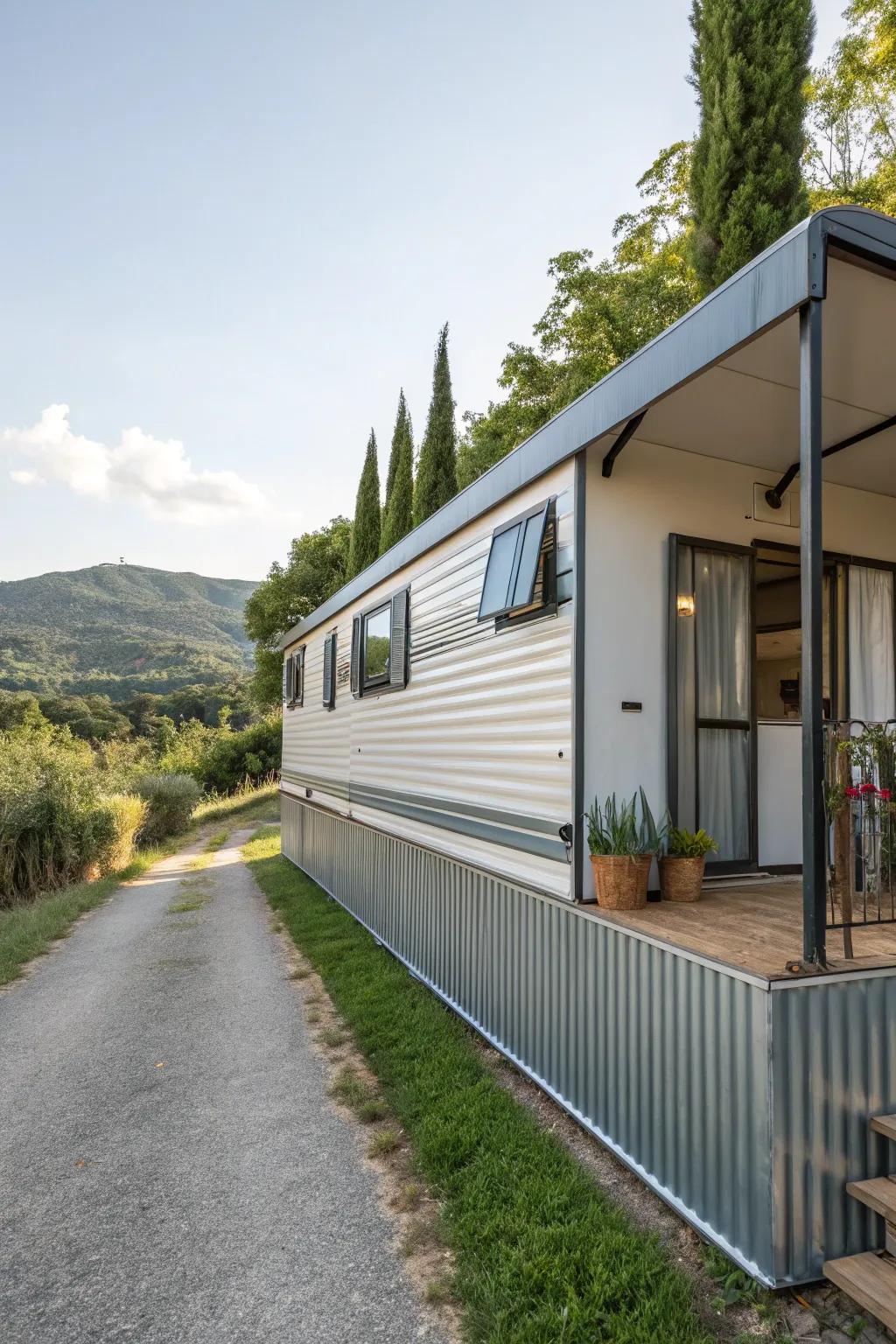
Metal skirting isn’t just tough—it’s a statement. When you want your mobile home’s foundation to turn heads, corrugated metal delivers that sought-after modern sheen while standing up to daily wear and tear. I’ve watched a simple exterior transform from dated to dazzling just by adding this metallic edge.
If you’ve ever wondered how to make metal work for you, consider these tips to help your skirting project shine:
- Choose the right finish: Matte, brushed, or shiny—each tells a different design story.
- Mind the trim: Seamless installation starts with precise edges and protective trim.
- Weatherproof your panels: A good rust-resistant coating guards against the elements and keeps things looking fresh.
I’ll never forget working with Marcus and Jan—two artists who craved a bold, creative look for their mobile home studio. Together, we chose a weathered steel for its raw appeal. By mixing reclaimed wood accents with the metal’s cool lines, their place became both functional and full of personality. Watching their faces light up at the finished result? That is why I love what I do.
Metal skirting truly gives your home both street cred and strength—go ahead, show off that edge!
Consider these options:
9. Ties That Bind or Just Divine?
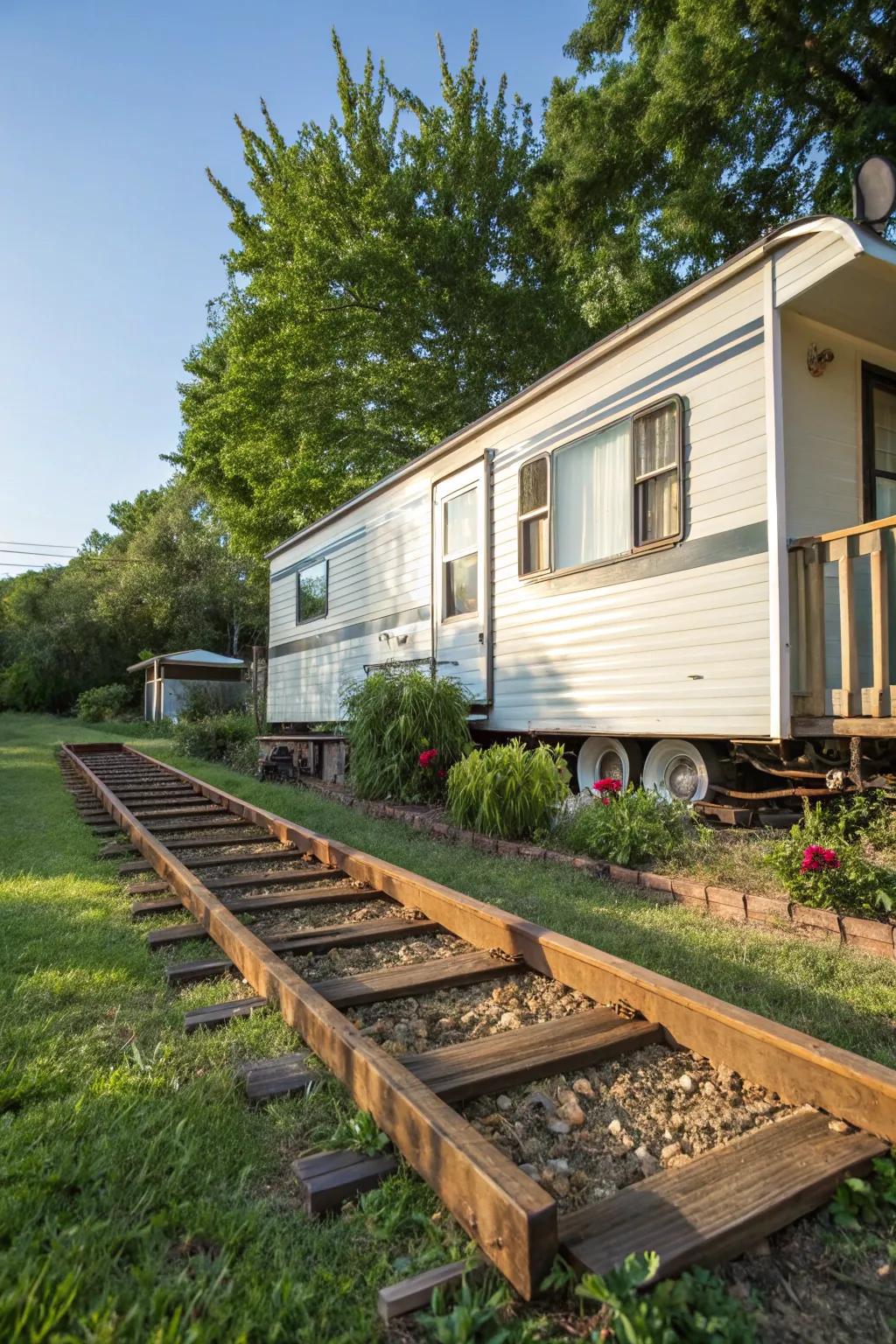
If you’re after that unexpected, rugged charm, have you ever thought about using railroad ties for your mobile home skirting? Their solid mass and weathered finish create a boundary that’s as unique as it is grounded. Visualize the bold lines, the earthy scent of timber, and the hint of nostalgia these reclaimed pieces invite.
Sometimes, the boldest designs come from materials with a story. Lay your ties end-to-end for a low, steady perimeter, or stack and stagger them for a heavier, fortress-like effect. The result? A skirting that’s truly one of a kind—will your neighbors be inspired to follow suit?
Useful items to consider:
10. Thinking Concrete? Durable Done Right!

If you ask me what’s truly tough as nails in the world of skirting, concrete panels win the prize. They shrug off wind, weather, and the passing years, all while providing a clean, finished look that transforms your mobile home’s foundation.
But what really makes concrete skirting practical is how you use it. Here are some steps to get the best out of this robust material:
- Install a moisture barrier beneath the panels to prevent dampness.
- Ensure your skirting extends below the frost line for year-round protection.
- Incorporate venting to prevent mold and maintain airflow.
I once worked with Sarah, who needed a near-zero-maintenance solution after storms kept ruining her previous vinyl skirting. We opted for precast concrete panels, installed with tight seams and unobtrusive vents. Sarah told me later that she stopped worrying about weather reports altogether!
That’s the peace of mind I love to deliver.
An extra tip: If you’re going for concrete, consider staining or painting your panels for a hint of character. Who says resilience can’t have style, too?
Concrete isn’t just strong—it’s smart.
You might like:
11. Lattice Skirting: Style Meets Ventilation Needs
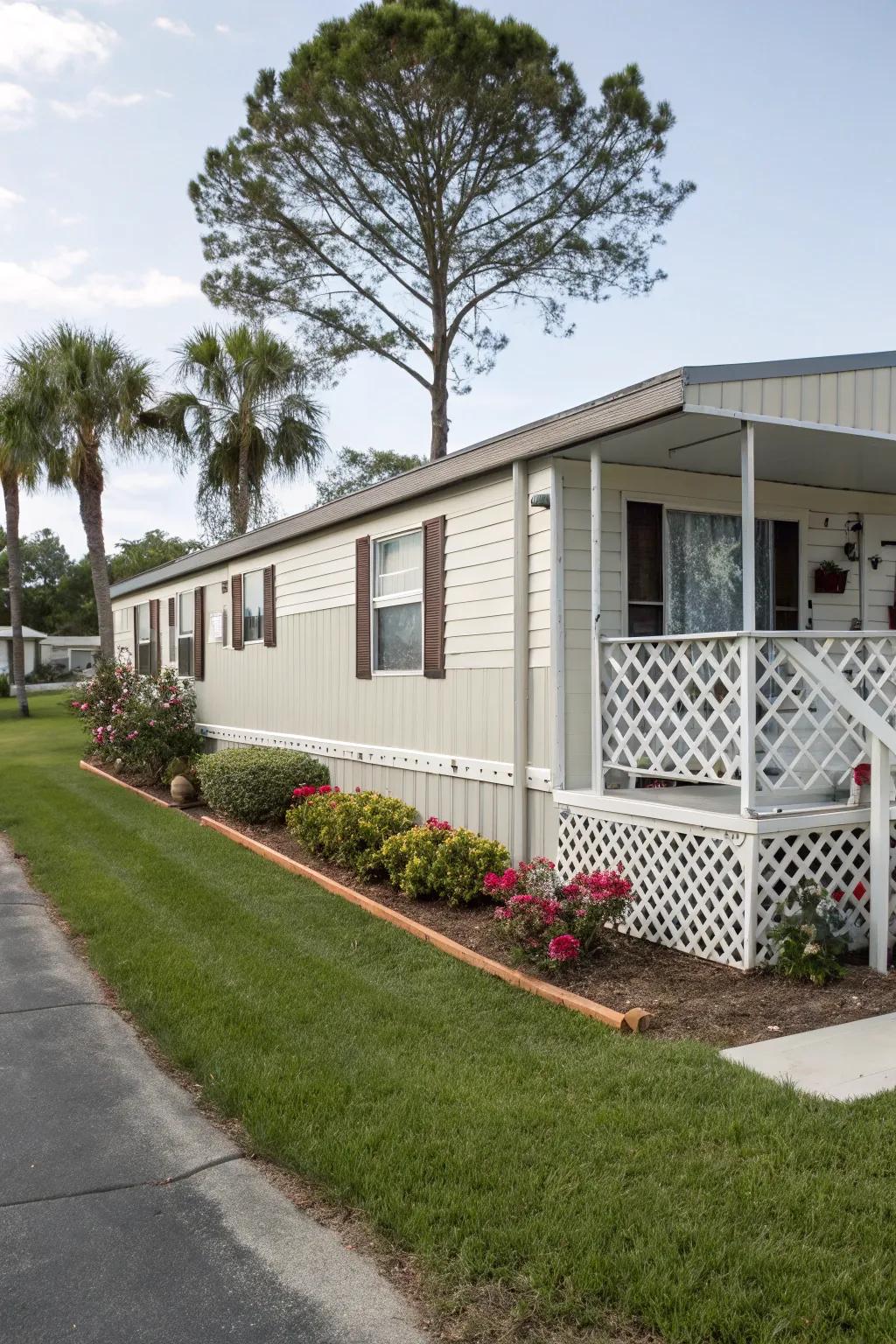
Lattice skirting is my go-to when you want both airflow and a pop of personality. The open design is perfect for encouraging ventilation, which helps prevent moisture issues, while the grid adds a decorative touch that looks great with almost any home color.
Let your creativity shine through—your home will thank you!
Try these:
12. Could Stones Be Your Home’s Next Stylish Secret?
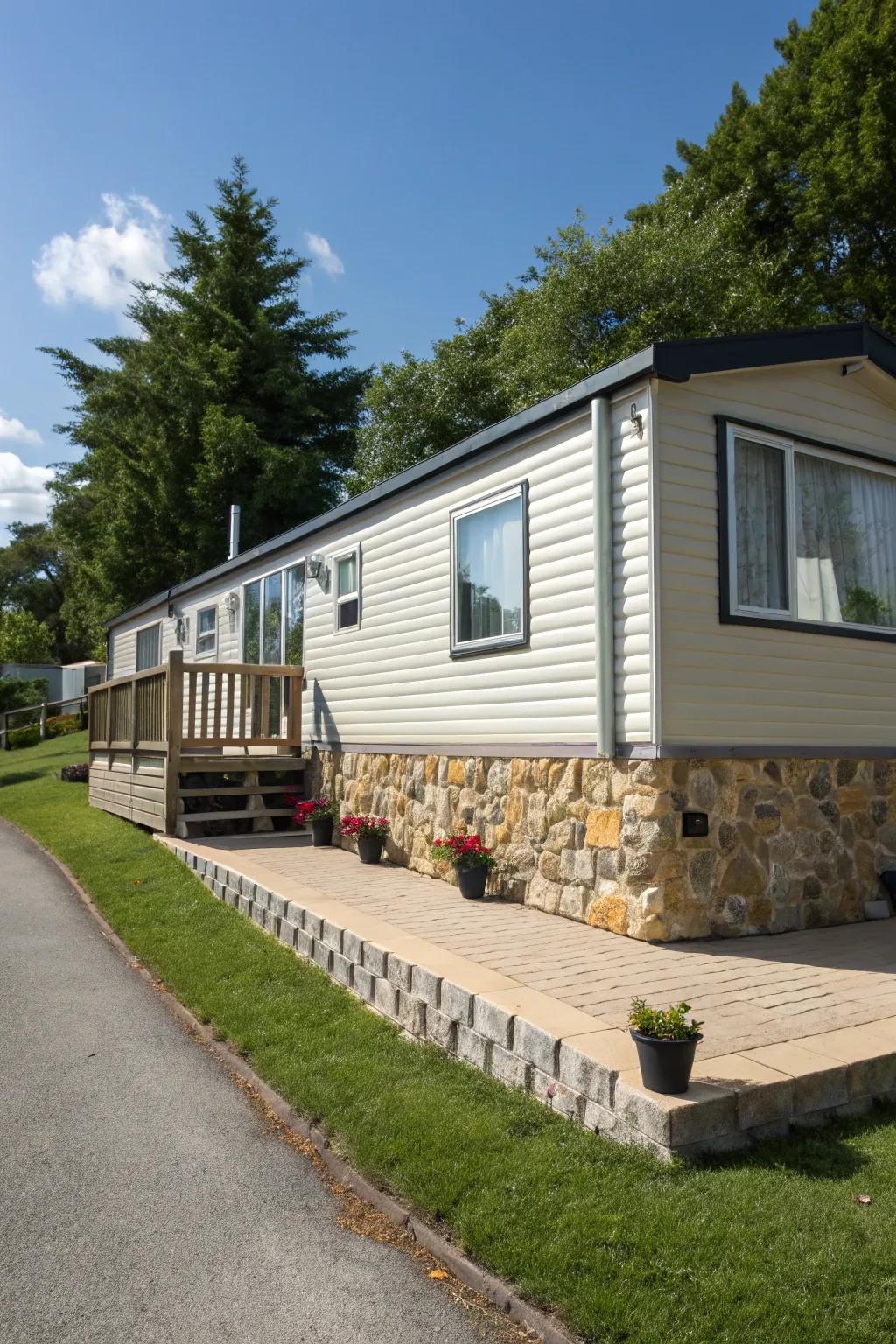
I always find that decorative stone skirting brings a certain earthy elegance—it’s subtle, yet striking. Those natural textures and muted hues are easy on the eyes, making every glance at your home a little moment of calm.
If you’re considering this choice, ask yourself:
- Will you mix multiple stone tones for depth?
- What pattern feels right—neat rows or a more organic look?
Try the unexpected. It might just become your favorite feature.
Items that may come in handy:
13. Go Vinyl!
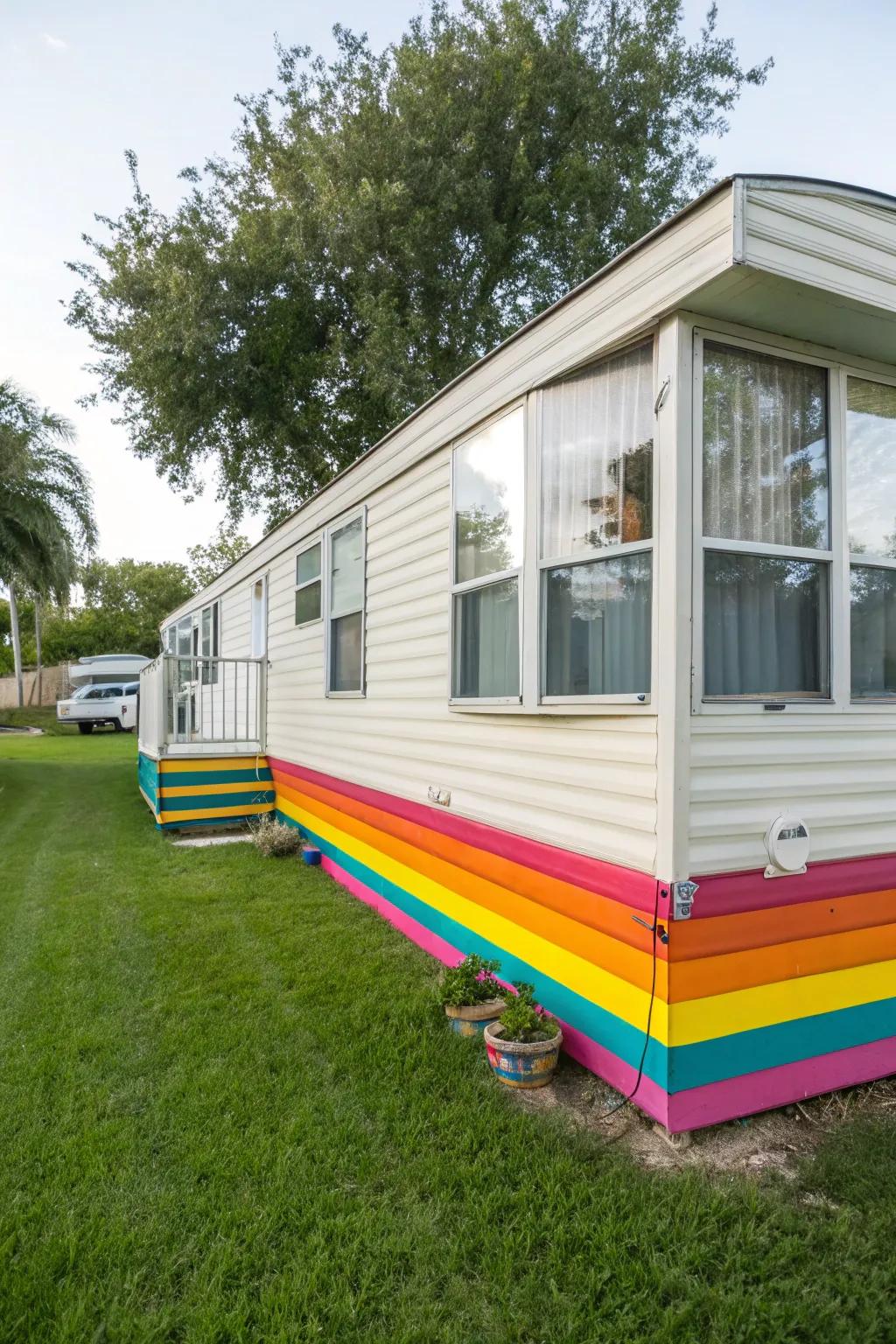
Start simple, start smart! If your budget is front and center, vinyl skirting offers affordability and versatility in one convenient package. It’s easy to install and comes in so many colors, there’s bound to be a perfect match for your style.
A few choices to try:
14. Wood You Rather? Rustic Skirting for Soulful Spaces

When I work with clients who crave a connection to nature, nothing beats the warmth of wooden skirting. There’s an ineffable coziness to real wood that turns a mobile home into a sanctuary—a mood that’s hard to match with other materials.
I remember helping Mia and Dave, a couple eager to recreate the magic of their favorite woodland cabin around their mobile’s foundation. Together, we chose wide, rough-sawn cedar boards, then layered in a lattice detail for a dose of personality. The result? Their home felt like it had sprouted straight from the earth, grounded and inviting.
If you’re thinking of going rustic, here are some must-know pointers for wooden skirting:
- Choose weather-resistant woods like cedar or redwood to stand up to the elements.
- Apply a waterproof stain for longevity without losing that natural glow.
- Combine solid skirting with a section of lattice to allow airflow and keep critters out.
A little planning goes a long way to keep your skirting gorgeous year-round!
Wooden skirting isn’t just about aesthetics—it’s an investment in atmosphere.
Every plank holds the promise of comfort, and every knot in the grain tells a story.
Possibly handy products:
15. Revive, Reuse, Reimagine: Sustainable Skirting with Heart

There’s something soul-stirring about giving second life to old materials. Reclaimed wood and metal tell stories—maybe from a weathered barn or a retired ship’s siding. Choosing these for your mobile home skirting isn’t just a nod to sustainability; it’s a celebration of character, resourcefulness, and mindful design.
Let me tell you about the Dunlaps, a family I helped who wanted their skirting to reflect their eco-conscious values and love for all things vintage. We sourced beautifully worn planks from a local salvage yard and paired them with a few sheets of gently patinaed metal. The result was a skirting that not only looked stunning, but also made neighbors do a double-take (in the best way). If you’re considering this direction, remember: it’s wise to treat wood before installation and to pre-measure every reclaimed piece—these materials don’t always play by the rules of uniformity! For a smooth project, consider:
- Cleaning and prepping your reclaimed materials thoroughly before use.
- Sealing or painting as needed to keep out the elements and highlight each piece’s unique beauty.
Every board, every panel adds a layer of history to your home.
Sustainable skirting isn’t just smart for the planet—it’s a way to root your space in tradition while looking boldly forward. Will your mobile home’s foundation tell a story worth repeating?
Check if these fit your needs:
16. Could Faux Rock Fool Your Eye?
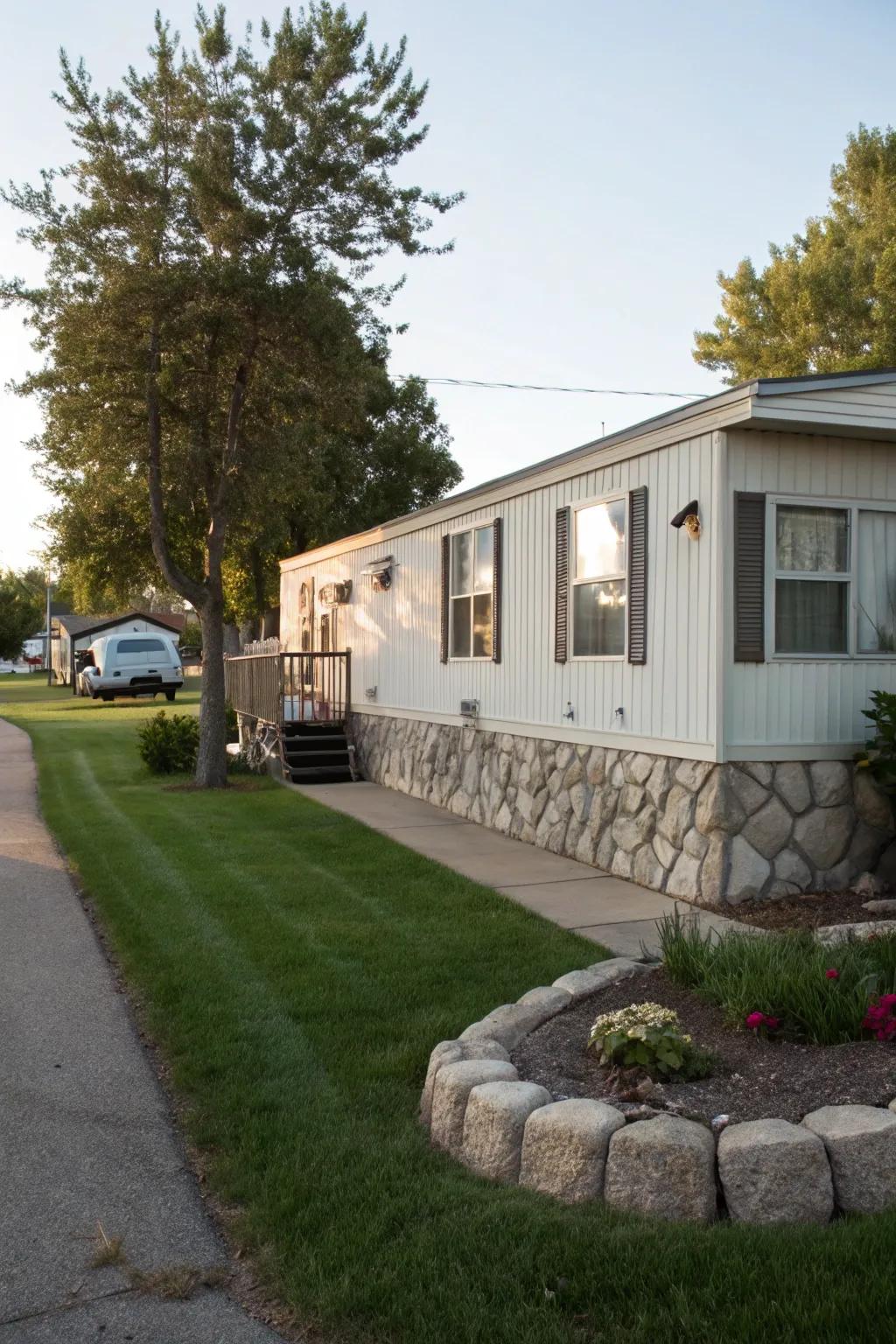
When you dream of the timeless charm of stone but your budget says otherwise, faux rock skirting becomes your secret weapon. Why settle for less when you can have the look—without the weight?
I’m always amazed by how convincingly these panels capture the character of natural stone. The textures, the color variation—it’s a visual treat.
Here are three of my favorite faux rock skirting approaches:
- Bamboo water fountain: Perfect for small spaces.
- Ceramic tiered fountain: Adds an elegant touch.
- Solar-powered water feature: Eco-friendly option.
Beyond curb appeal, faux rock is also simple to install and maintain—no heavy lifting or masonry required. Whether you want to blend in or make a bold statement, these options will elevate your home’s presence with ease.
A few suggestions:
17. Insulated Skirting for Extreme Climates
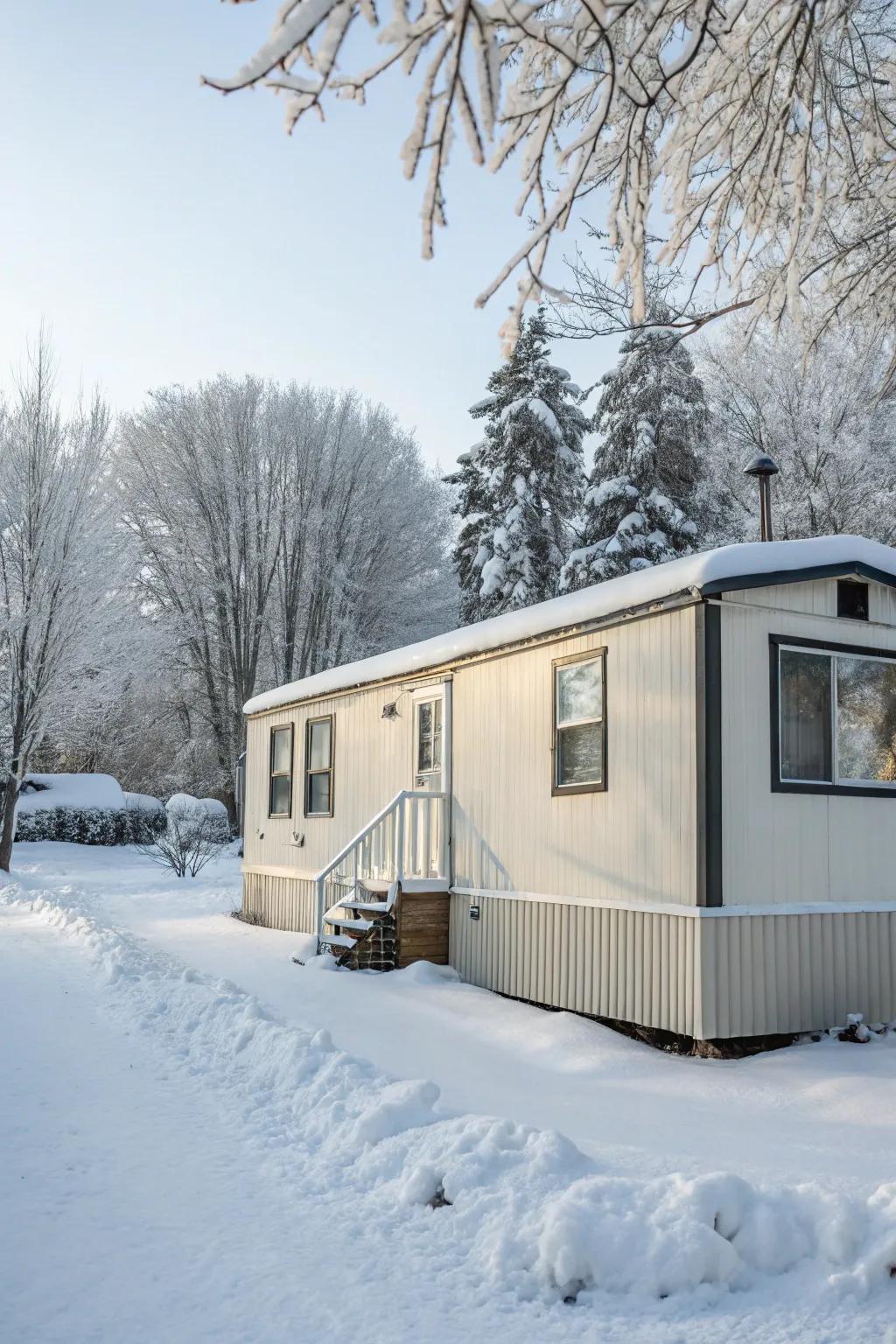
If you live in a region with extreme weather, insulated skirting can help regulate your home’s temperature. I’ve found it crucial in protecting pipes and reducing energy costs.










